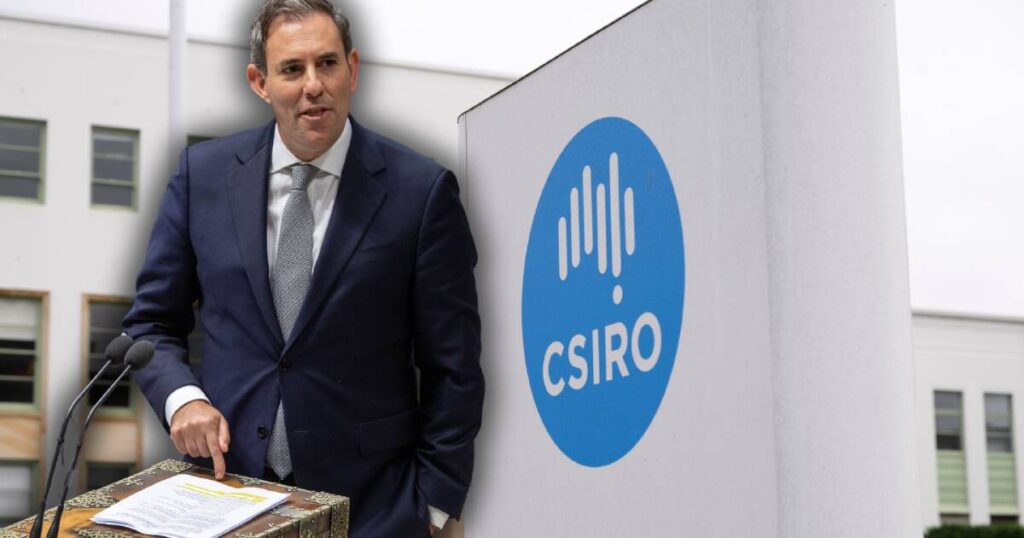
The Albanese government is set to announce a significant funding boost for the Commonwealth Scientific and Industrial Research Organisation (CSIRO), addressing urgent needs for building repairs and equipment upgrades. This move comes after the science agency highlighted its financial struggles, exacerbated by a backlog of maintenance and the threat of job cuts.
The Canberra Times has learned that the upcoming mid-year budget update will allocate over $100 million to the CSIRO. The agency is facing a dire situation with more than 80 percent of its 840 buildings deemed “past their technical end of life.” Treasurer Jim Chalmers confirmed the funding increase, acknowledging the CSIRO’s operational costs have been outpacing its revenue.
CSIRO’s Financial Struggles and Infrastructure Needs
Treasurer Chalmers, speaking to the ABC, emphasized the government’s ongoing commitment to supporting the CSIRO. “We always try to fund the sciences as best we can,” he stated, reinforcing the administration’s belief in the importance of the CSIRO’s work. Despite this support, the agency’s financial woes are mounting, with a $280 million repair and maintenance backlog.
CSIRO Chief Executive Doug Hilton detailed the scale of the challenge, noting that repairs to the Australian Centre for Disease Preparedness in Geelong alone could cost around $1 billion. He also highlighted the need for annual investments between $80 million and $135 million over the next decade to maintain and upgrade equipment, including cybersecurity measures.
Calls for Long-term Funding and Support
ACT Independent Senator David Pocock has been vocal in his support for increased funding, launching a petition to secure long-term financial stability for the CSIRO. “Years of delayed investment are now catching up with us, and the cost is not just financial, it’s human,” Senator Pocock remarked. He stressed the necessity for stable funding to support both infrastructure and personnel, which are critical to Australia’s research future.
Since the announcement of potential job cuts, Senator Pocock’s office has been flooded with messages from concerned staff and community members. The senator pointed out that federal funding for the CSIRO has dwindled over the years, dropping to less than half of what it was per capita in the 1980s and decreasing by 87.5 percent as a share of GDP.
Government and Political Reactions
Labor backbencher and former science minister Ed Husic also urged the government to increase the CSIRO’s budget. He expressed concern over the potential loss of research capacity due to job cuts, advocating for funding that would benefit the country in the long term. “If you want to find the money, you’ll find it,” Husic stated, citing recent government spending on other projects as evidence of available resources.
A spokesperson for Science Minister Tim Ayes reiterated the government’s desire to ensure CSIRO staff operate in safe and technologically advanced facilities. However, the spokesperson acknowledged that the agency’s budget has been rising at a rate below inflation, effectively resulting in a real-term cut.
Implications and Future Prospects
The funding boost represents a critical step in addressing the CSIRO’s immediate financial challenges, yet it also highlights the need for a sustainable, long-term funding strategy. As Australia grapples with the demands of modern scientific research, ensuring the CSIRO’s infrastructure and workforce are adequately supported will be essential.
Looking ahead, the government’s ability to balance fiscal constraints with the need for investment in science and technology will be closely scrutinized. The CSIRO’s situation underscores the broader challenges facing research institutions globally, as they navigate financial pressures while striving to maintain their role at the forefront of innovation.
The forthcoming budget update will be watched closely by stakeholders across the scientific community, with hopes that it signals a renewed commitment to supporting Australia’s national science agency.






